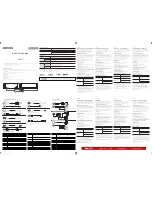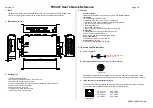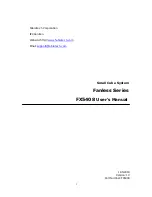
Lucent Technologies Lineage
®
2000 200A Ferroresonant Rectifier J85503B-2
6 - 24 Testing
Issue 8 January 1999
5. Repeat from Step 2 (battery voltage check and adjustment)
until all rectifiers are carrying between 5 and 95 percent
rated load and the battery voltage is within the required
tolerance of the desired float voltage.
6. Turn on one of the spare rectifiers, and turn off one of the
previously loaded rectifiers (same number of rectifiers on).
7. Repeat Steps (2) through (4).
8. Repeat for each rectifier that has not been adjusted.
9. Upon completion, turn all rectifiers on.
Enable and Test
Load Share
Note
This test applies only to -48V rectifiers.
After adjusting the rectifiers to float voltage as described above,
enable the load share feature.
1. Make sure that each rectifier is carrying some load current,
between 5% and 95% of full load.
2. Move S1.9 on CM2 right to the 1 (on) position on each
load-sharing rectifier. Each rectifier should load share to
within 20 amperes.
3. Verify that load-sharing rectifiers are producing the same
current ± 20 amperes.
4. Simulate a blown F1 fuse (FS1 socket) on the CM2
control board. The LSF LED on the control panel should
light and a load share alarm should be generated on TB3-9
and TB3-10 of CM4.
Note
A minimum of two load-sharing rectifiers are required for
testing. Each rectifier must be supplying 10 to 90 percent of
the plant load. S1.9 on CM2 must be in the on position and
the rectifiers must be connected for load sharing. Test at any
convenient current between 10 and 90 percent of the rectifier
capacity.
















































